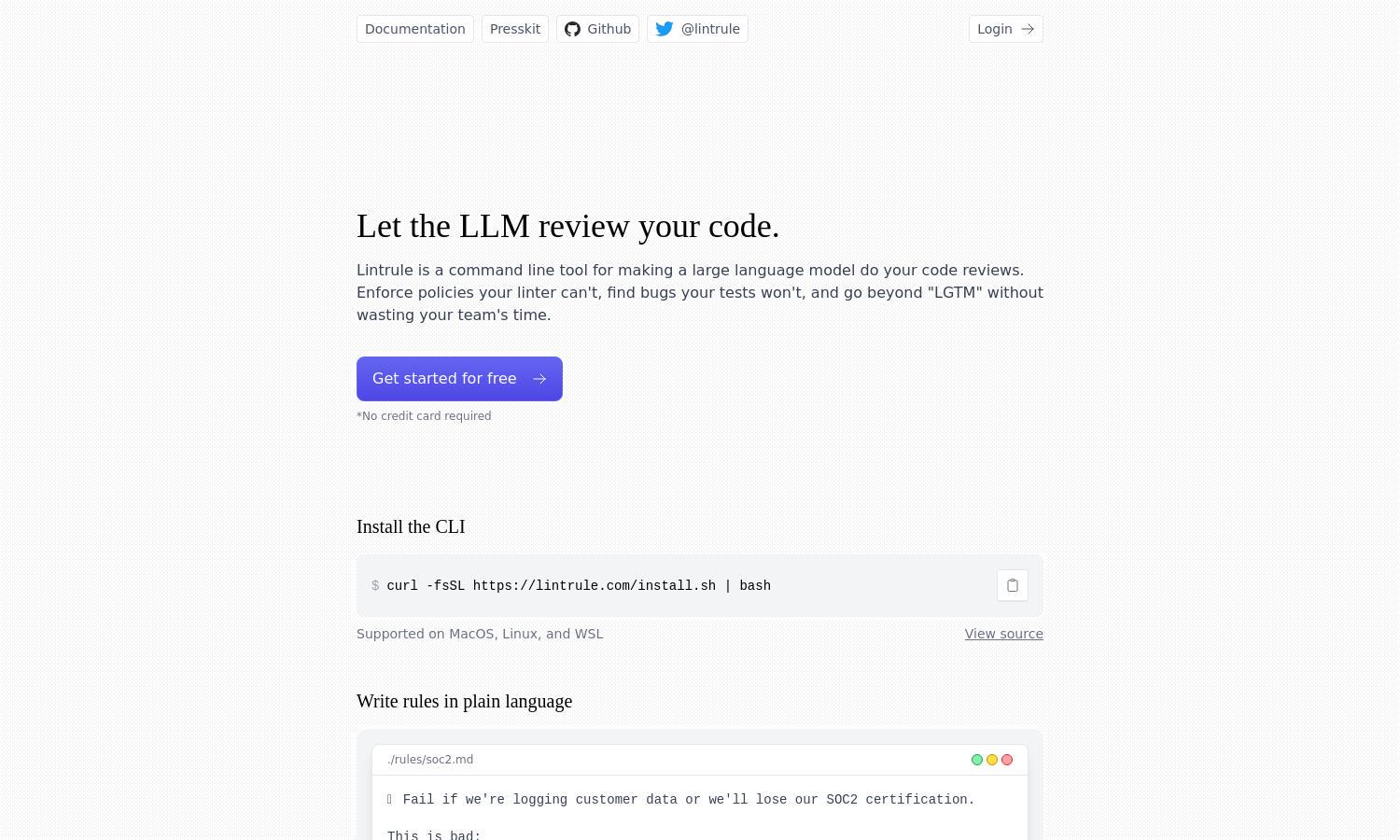Lintrule

About Lintrule
Lintrule streamlines the code review process by utilizing a powerful language model that identifies bugs and enforces coding policies automatically. Users set up the tool easily with CLI commands, allowing developers to focus on writing better code while ensuring compliance and quality control on their projects.
Lintrule offers competitive pricing at $1.00 per 1,000 lines of code changed, with monthly costs tailored to project size. Small projects incur around $20 per month, while larger projects can expect costs up to $250 monthly. This scalability ensures every team can benefit from effective code reviews.
Lintrule features a user-friendly interface with a straightforward layout that enhances the user experience. Navigation between rules, billing estimates, and the command line tools is seamless, helping users access powerful features quickly and efficiently, ensuring every code review process is swift and intuitive.
How Lintrule works
To begin using Lintrule, users set up their coding project with an easy command that initializes a .rules folder. After logging in, they can create rules in markdown format. The platform efficiently runs these rules on code diffs, delivering actionable feedback that allows for immediate code improvements and debugging.
Key Features for Lintrule
LLM-Powered Code Review
Lintrule leverages advanced LLM technology to provide automated code reviews, identifying bugs and enforcing policies that traditional linters may miss. This feature benefits users by saving time and enhancing code quality, promoting robust coding practices within development teams effectively.
Customizable Rule Sets
Lintrule allows users to create and customize their own rule sets in markdown format, accommodating specific project requirements. This flexibility enhances user experience by ensuring tailored reviews that meet individual coding standards, thus improving overall team efficiency and code quality assurance.
Cost-Effective Billing System
Lintrule features a unique billing system based on the lines of code changed, making it cost-effective for various project sizes. Users can estimate their costs easily, ensuring transparency and affordability, thus enabling teams to efficiently manage their code review expenses without surprises.







